Penny Tile Shower (Pros and Cons & Ideas)
If you’re considering having a penny tile shower, you’re up for a classic feel that can transport you back to the past. Penny tiles were introduced in the 1900s, but that doesn’t make them an element you can’t use today. If you choose penny tiles for your shower, their ambiance is more than just a classic appeal; it is also a retro vibe.
Penny tiles, the size of pennies with a quarter-inch measurement in diameter, can be made from ceramic, glass, metal, porcelain, and stone. While porcelain penny tiles are the most popular, glass designs look elegant and stunning but are not as durable. These tiles are grouped together and stuck with one another to cover an area like the entire bathroom shower.
Penny rounds in the shower are guaranteed to be eye-catching because while the style started a century ago, it’s not a common sight in the bathroom, which can be to your advantage. The shower can accent the bathroom and give it a unique element to look at. But is it the ideal option for you?
Pros And Cons Of A Penny Tile Shower

A penny tile shower will be an aesthetically interesting addition to your bathroom but like everything else, it has its own drawback. So before you make a decision, discuss the pros and cons of having a penny tile shower and check if the advantages outweigh the drawbacks that come with it.
Pros of A Penny Tile Shower
Here are some advantages you are sure to benefit from:
• Non-slip surface – Penny tiles can be installed in wet areas and spaces with high foot traffic, which is perfect for the bathroom.
• Durable – With tile sealer or epoxy, pennies or tiles are glued down to the flooring which makes it strong and durable.
• Flexible – With a design that can match any style, from classic to contemporary.
• Stylish – More than just an incredible visual addition to the bathroom, it also offers unique tile shapes and styling to the design. They are also used for vanity and kitchen backsplash and mirror accents.
• Easy to find – Options for penny tile walls and floors are easily found in different styles and materials to match any budget.
• A wide variety of colors and patterns – From its classic black and white version, a penny tile shower can come in a variety of colors and patterns, depending on your preference and creativity. You can go for showers with a bold color or tile pattern or one with a subtle shade.
When considering the surface, matte and glossy are both possible. Find out more penny tile flooring designs here.
• DIY-friendly – This can be DIY-ed, but only if you really know what you’re doing. DIY-ing a bathroom design will lower the cost and tickle your creativity.
Cons of A Penny Tile Shower
With all the advantages you can enjoy, these are the drawbacks that come with it:
• Can be expensive – Even when upcycling pennies in your flooring, this type is more costly than regular tiles. Pre-placed and designed panel products are more affordable because they do not require the intensive labor that involves gluing actual pennies on the floor, and you would have to pay professional contractors to do this task for you.
• Complicated installation and removal – Installation of these materials is meticulous and time-consuming, which is why you need the help of a pro in it. If you are willing to try to DIY, make sure you know how and you have enough time to spend on installing these tiles.
Removing it is also a big challenge, considering it was built to be highly durable and not meant to be easily removed in the first place.
• Requires rigorous cleanup and maintenance – These types of floor tiles have many grout lines to cover; cleaning will take a lot of time and needs a meticulous and rigorous touch.
Penny Tiles For Shower Walls
When considering penny tiles for your shower walls, consider the color and theme you have going for your bathroom. Since they are smaller, you can add more colors and patterns to your walls.
This is the reason why they are highly customizable, and if you plan to get creative with your enclosure walls, their designs are excellent for it. You can choose classic ceramic, luxurious marble, and sophisticated, glossy glass tiles.
When it comes to colors, here are some considerations for your penny tile shower:
• Classic/retro black and white for a vintage look
• Contemporary and chic gray squares or other geometric shapes
• Coastal blue tiles and white grout enclosure
• Tan tile enclosure for a warmer look
• Bold turquoise tiles and white grout walls
If you are considering patterns for the enclosure wall, they can work wonderfully. And you can create the pattern in any color you wish to have. See our guide to the best tile for shower walls here.
Some of the popular patterns include:
• A single color (classic monochrome)
• Contrasting grout color and tile
• Random multi-color effect
• Inlays, Listello borders, and accents (for example, waterfall effect or wall niche)
Penny Tiles For Shower Floors
Penny tile flooring in diners’ homes was popular in the 1900s, but shower floors differ entirely. Choosing these tiles for the enclosure floor adds a unique and lovely texture, making it an ideal option in the bathroom since it adds friction and helps you avoid slipping.
You can choose penny tiles for both the walls and flooring, whether they are the same color or different ones. If you want to contrast, you can do that with the grouts alone without needing different colors for the floor and the walls.
Here are some considerations for patterns and colors:
• Neutral white tile floor with black grout for added character
• Cozy blue tile floor with white grout
• Monochromatic and eye-catchy black tile with white grout lines
Is This Tile Good For A Shower Floor?
It is a fact that penny tiles were used for flooring in the 1900s, but talking about shower floors, which always get wet, is a different matter. Wherever in the home you install them, though, they are an excellent choice for flooring.
Penny tiles are good for a shower floor because of the added texture and friction from the many grout joints in between the individual pieces. They are also extremely durable and resistant to wear and tear. Find more about what types of tiles are best for a shower floor here.
Is This Tile Slippery In A Shower?
Penny tiles can be slippery, but the grout joints add texture to the flooring, and your feet can glide over them without slipping. With a similar feeling to walking on hardwood flooring, you still need to be careful, especially if your material is made from glass. Glass surfaces for flooring can be dangerous because they crack easier and feel slippery.
Are These Shower Tiles Hard To Keep Clean?
A penny tile floor may take a lot of time and effort to clean, not just because the bathroom typically has high foot traffic but also because of the little grout lines between each piece.
You have to be meticulous and take the time to clean each grout thoroughly. And this is exactly how you maintain these showers, too- by having a regular cleaning routine.
How Do I Clean These Tiles?
In cleaning a penny tile shower, here is a simple guide to follow:
Step 1: Mix the cleaning solution you are going to use
This can depend on the type of penny tiles you have. Hot water is enough for cleaning, but mixing one part warm water and one part scouring powder works if you need to remove stains. The vinegar and water solution is the way to go for porcelain materials.
Step 2: Spritz the penny tiles
Rinse the surface area first to prepare it for thorough and meticulous cleaning.
Step 3: Apply the mixture to the surface
If you will be cleaning in general with hot water, just spritz it on the surface for 5 minutes and wait for 20 minutes. For your scouring powder solution, let it sit for around 15 minutes while you only need around 5 to 10 minutes for the vinegar mixture.
Step 4: Scrub the tile and grout area thoroughly
Get a soft bristle brush and scrub the surface thoroughly, giving more attention to the grouts and joints. You can work in two directions on the surface.
Step 5: Rinse the tiles with warm/hot water
Use hot water for porcelain tiles but warm water for other types. Warm or hot water can ensure that the solution you applied will be thoroughly wiped out.
Step 6: Dry the surface with a mop
Use a damp mop after rinsing and then a dry mop after that.
For more articles like this, visit our mosaic tiles for shower floor design guide.

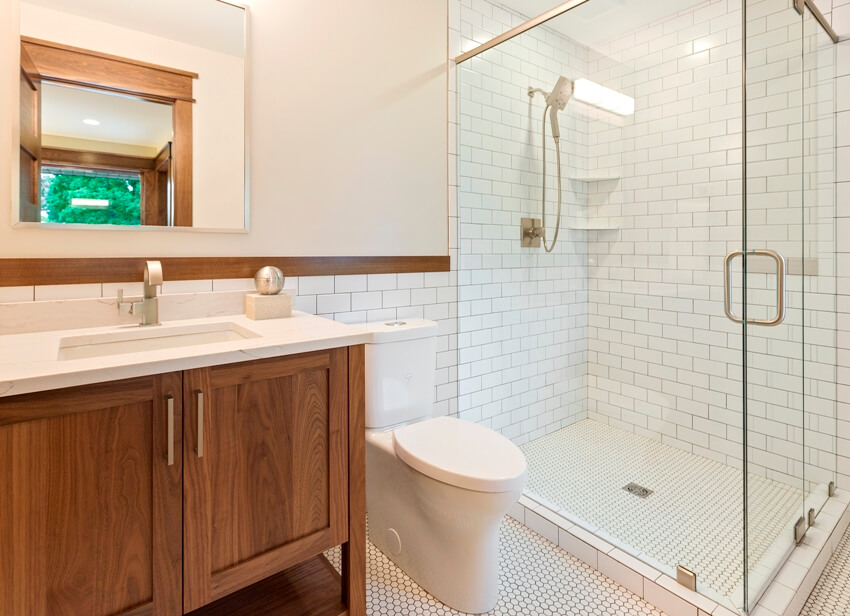
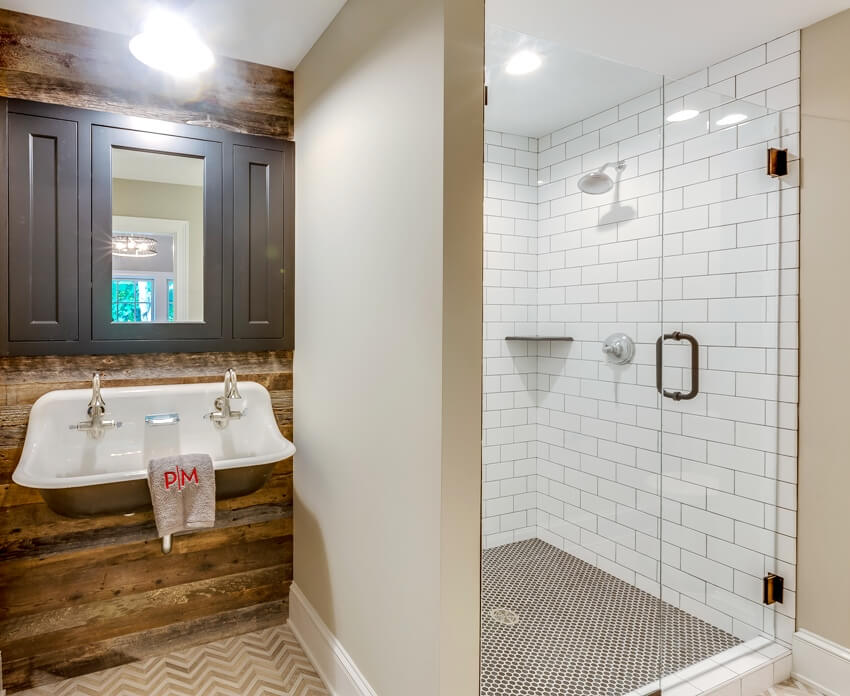
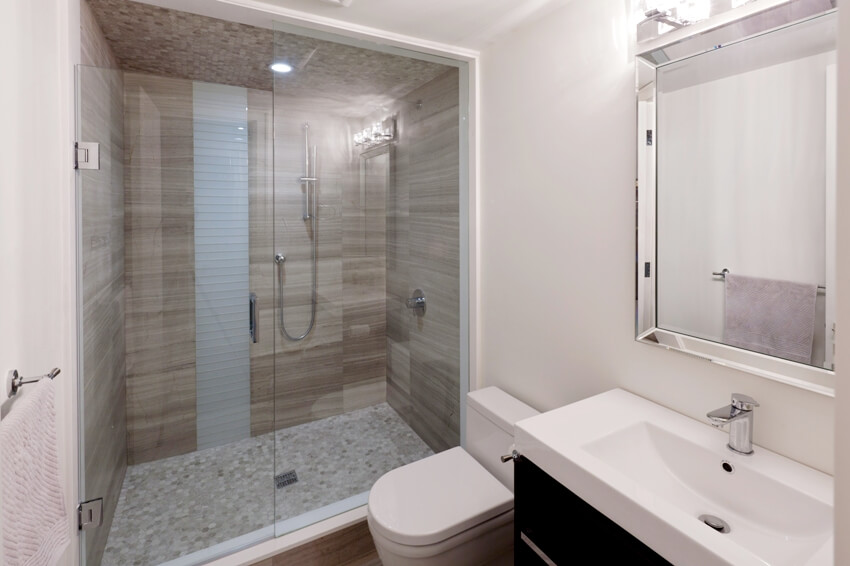
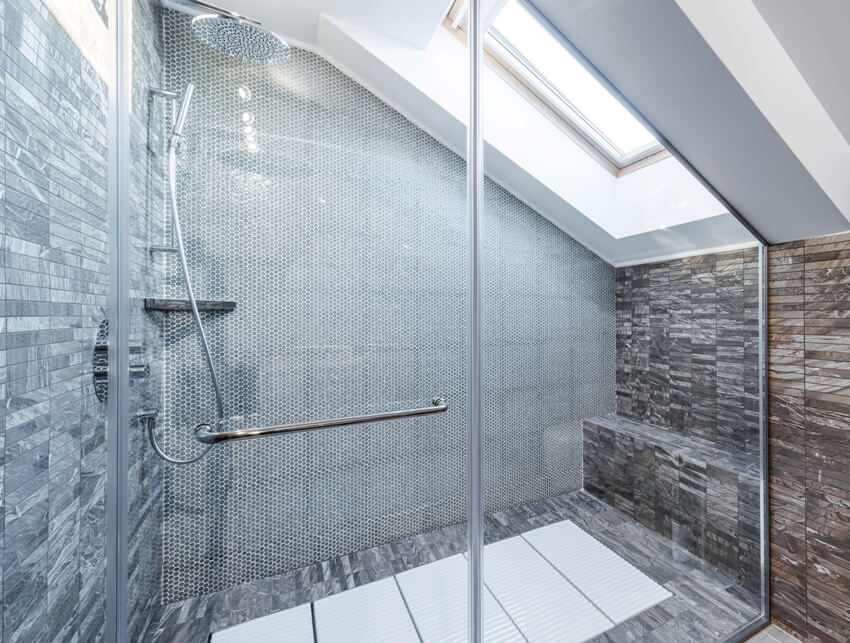
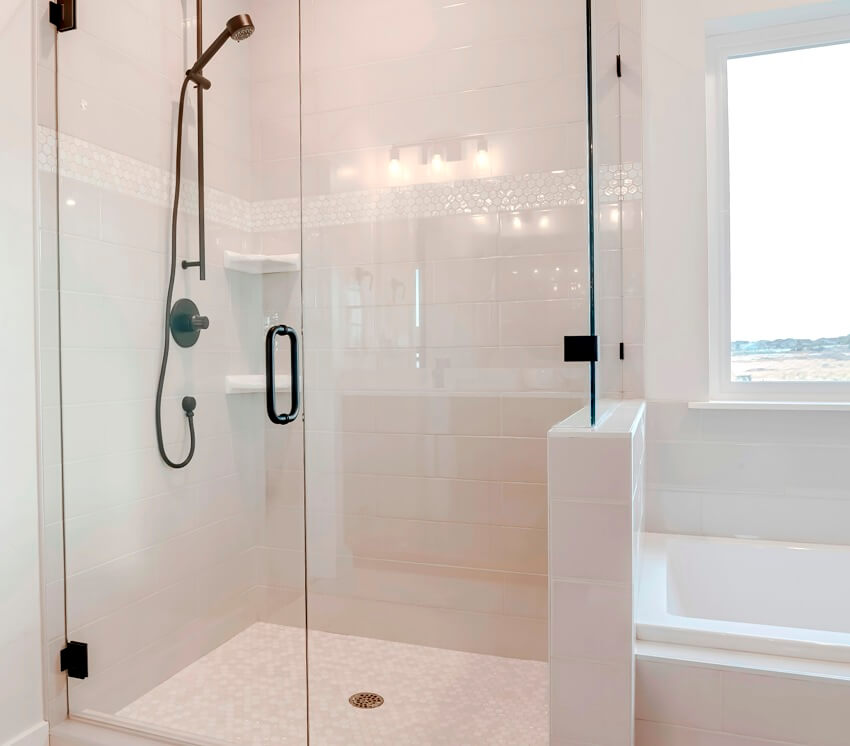

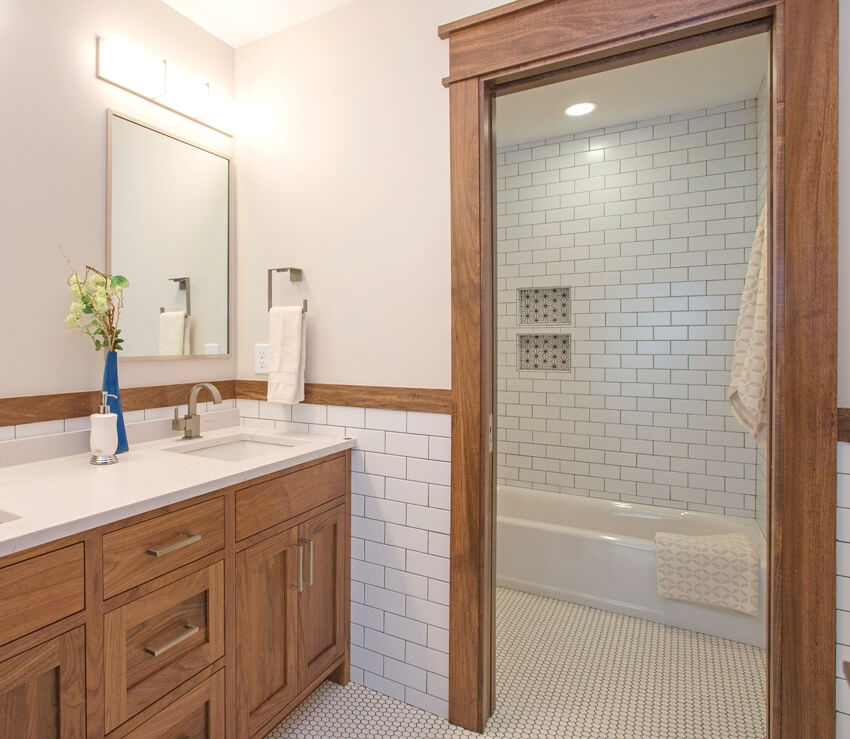
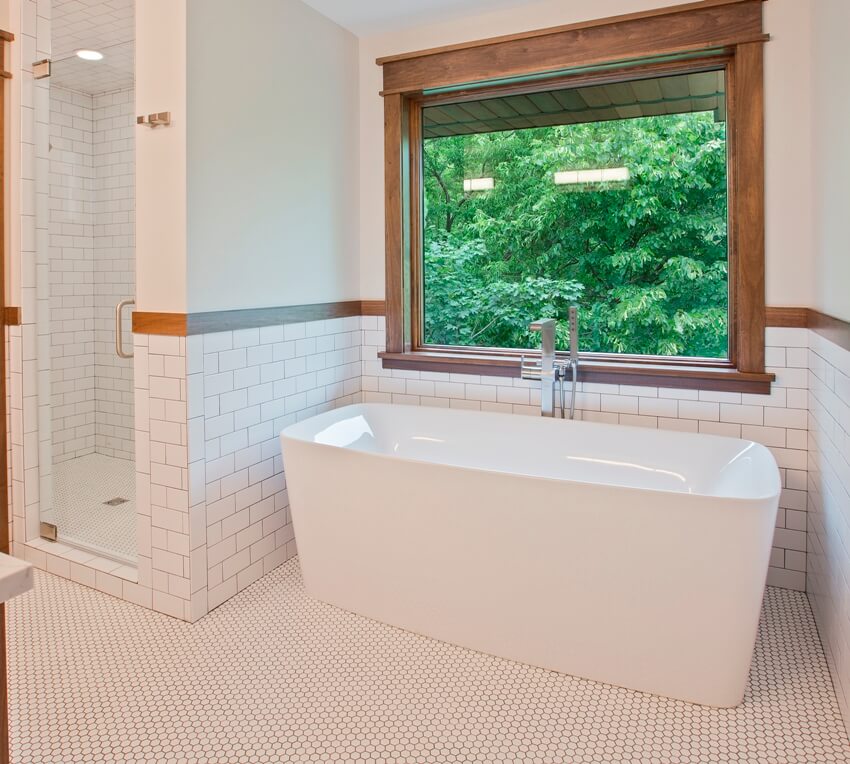




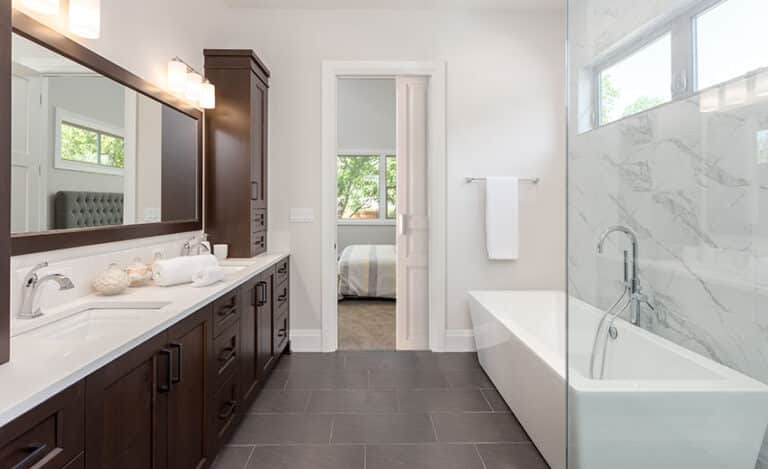
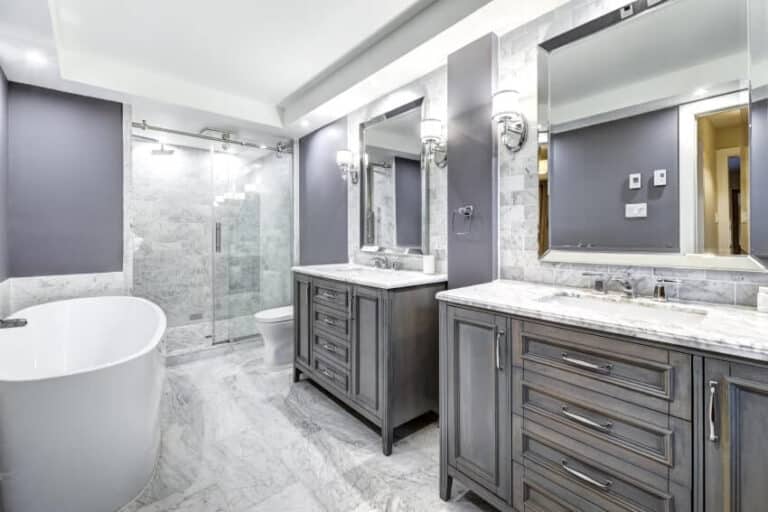
Can they be used to cover damaged built in bath tub?